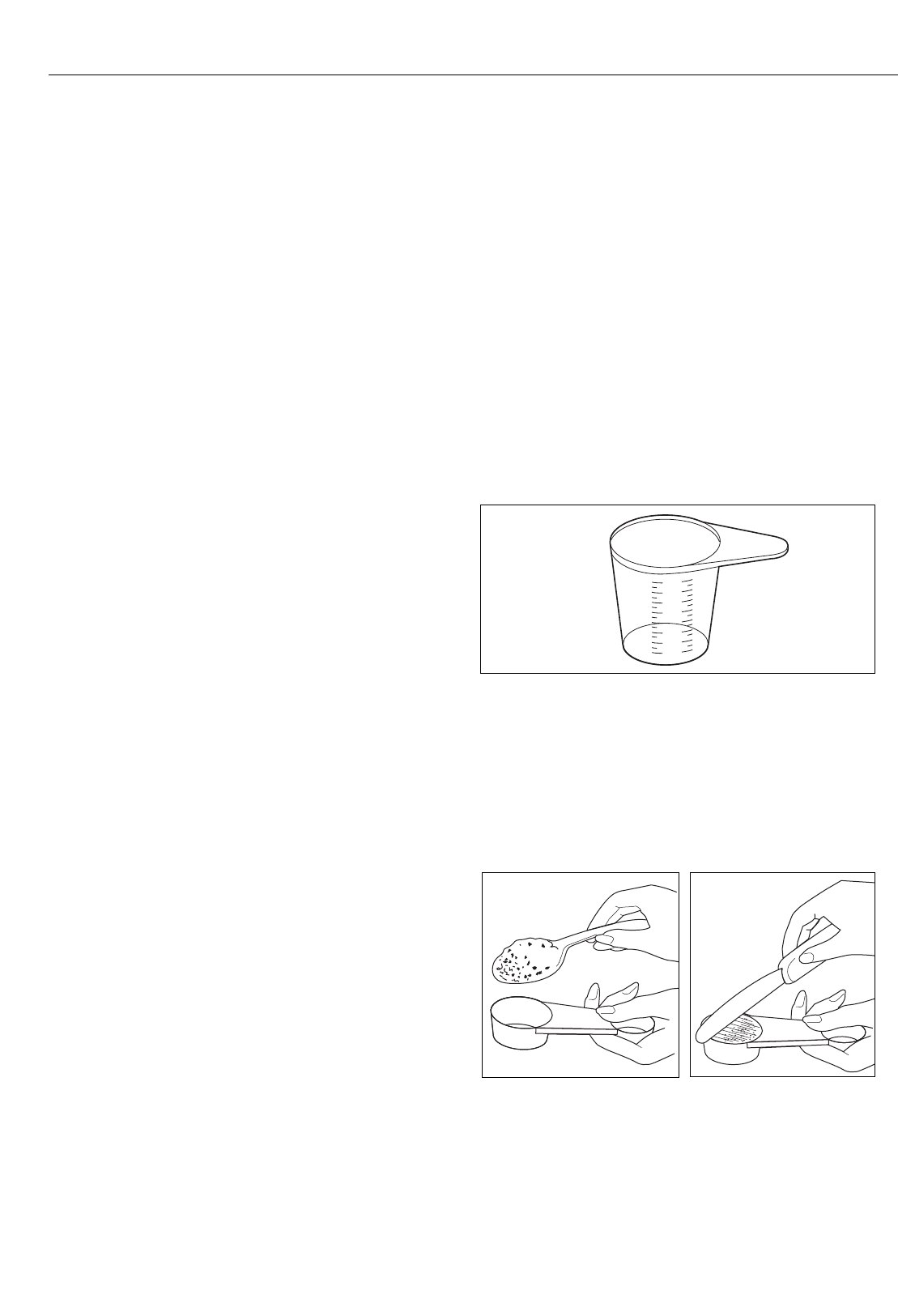
13
4
The mixture should foam and produce a strong
yeast aroma. If this does not occur, discard mixture
and start again with another packet of dried yeast.
Sugar
Sugar is important for the colour and flavour of
breads. It is also food for the yeast as it supports the
fermentation process. Artificial sweeteners cannot be
used as a substitute for sugar as the yeast will not react
properly with them.
Salt
Salt is necessary to balance the flavour of breads
and cakes, as well as for the crust colour that develops
during baking. Salt also limits the growth of yeast so
the amounts shown in the recipes should not be
increased. For dietary reasons it may even be
eliminated entirely, however, your bread may over-
proof and rise higher than normal.
Liquids/milk
Liquids such as milk or a combination of powdered
milk and water, can be used when making bread. Milk
will improve flavour, provide a velvety texture and
soften the crust, while water alone will produce a
crispier crust. Some liquids call for juice (orange, apple,
etc) to be added as a flavour enhancer. Note: For most
recipes we suggest the use of dry skimmed milk.
Eggs
Eggs add richness and a velvety texture to bread
doughs and cakes.
Butter & margarine
Butter and Margarine ‘shortens’ or tenderises the
texture of yeast breads. Breads that call for butter stay
fresh longer. If butter or margarine is used direct from
the refrigerator, it should as softened for easier
blending during the kneading cycle. Sunflower oil can
be used as a substitute for butter or margarine.
Baking powder
Baking powder is a raising agent used in quick
breads and cakes. This type of raising agent does not
require rising time before baking as the chemical
reaction works when liquid ingredients are added.
Bicarbonate of soda
Bicarbonate of Soda is another raising agent not to
be confused or substituted for baking powder. It also
does not require rising time before baking as the
chemical reaction works during baking process.
Measuring your ingredients
The key and most important step when using your
Breadmaker is measuring your ingredients precisely
and accurately. It is extremely important to measure
each liquid and dry ingredient properly or it could
result in a poor or unacceptable baking result. The
ingredients must also be added into the baking pan in
the order in which they are given in each recipe. Liquid
and dry measurements are done somewhat differently
and are as follows:
Liquid Measurements
Use the cup provided. When reading amounts, the
measuring cup must be placed on a horizontal flat
surface and viewed at eye level (not on an angle).
The liquid level line must be aligned to the mark of
measurement. A ‘guesstimate’ is not good enough
as it could throw out the critical balance of the
recipe.
Dry Measurements
Dry measurements (especially flours) must be done
using the measuring cup provided. Dry measuring must
be done by gently spooning ingredients into the
measuring cup and then once filled, levelling off with
a knife. Scooping or tapping a measuring cup will pack
the ingredients and you will end up with more than is
required. This extra amount could affect the balance of
the recipe. Do not sift the flour, unless stated.
When measuring small amounts of dry or liquid
ingredients (ie yeast, sugar, salt, powdered milk,
honey, molasses) the standard measuring spoon which
is provided must be used. Measurements must be
level, not heaped as this small difference could throw
out the critical balance of the recipe.
Your breadmaker produces delicious baked goods
with ease. This machine asks only that you carefully
follow the recipe instructions. In basic cooking,
normally ‘a pinch of this and a dash of that’ is fine, but
R
ST


















